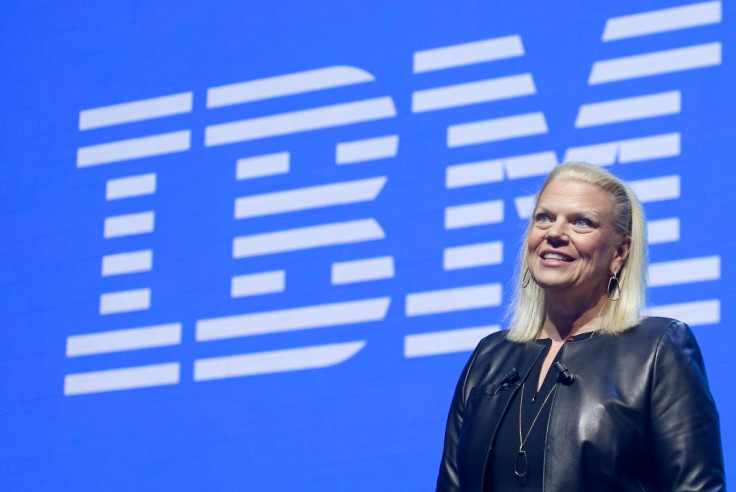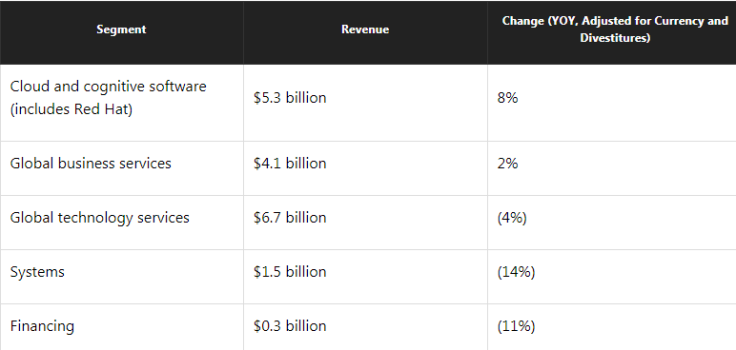IBM Reports Messy Results

International Business Machines (NYSE:IBM) reported its third-quarter results after the market closed on Wednesday. Revenue came up short of expectations, although there was a lot of noise involving currency, divestitures, and the accounting treatment of the Red Hat acquisition.
Earnings edged out analyst estimates, and the company reiterated its guidance for the full year. On a normalized basis, revenue from Red Hat grew by 20% year over year, an acceleration from its time as a stand-alone company. But weak mainframe sales in the lead-up to the new z15 system and a slump in sales for the global technology services segment hurt the company's results.

IBM's third-quarter results were complicated by Red Hat. The company was able to record just $371 million in revenue from Red Hat during the quarter, significantly less than the $987 million the software company would have reported if it hadn't been acquired. Most of the difference is due to purchase accounting and the elimination of sales between IBM and Red Hat.
Currency and divestitures were also an issue. Excluding both, but including the partial Red Hat revenue, IBM's revenue would have declined by just 0.6% year over year. Cloud revenue rose 14% year over year, adjusted for currency and divestitures, to $5.0 billion.
Here's how IBM's segments performed during the quarter:

The global technology services segment suffered from weaker-than-expected client business volumes, but signings grew by 20%, and cloud signings jumped 60%. The systems segment was down thanks to a 20% decline in mainframe sales. IBM began shipping its new z15 mainframe system in the last week of the quarter, so mainframe revenue should spike in the fourth quarter.
Debt and guidance
IBM used debt to finance the acquisition of Red Hat, and it's now prioritizing paying down that debt. The company has suspended share buybacks for the time being so that debt repayment takes center stage. Since the end of the second quarter, IBM has reduced its total debt by close to $7 billion. IBM's core debt, which excludes debt tied to its financing business, now sits at $43 billion, down about $5 billion.
IBM kept its full-year earnings and free cash flow guidance the same. The company expects non-GAAP EPS of at least $12.80, a number that includes certain Red Hat acquisition-related expenses. Free cash flow is expected to be around $12 billion.
IBM will be able to recognize an increasing proportion of Red Hat's revenue in future quarters as these transaction-related adjustments run their course. And starting in the fourth quarter, the company will get a revenue boost from the z15 mainframe. IBM should be able to grow revenue in 2020, even with continued currency headwinds, thanks to Red Hat and the mainframe business.
Whether that revenue growth is sustainable this time around remains to be seen.
This article originally appeared in the Motley Fool.
Timothy Green owns shares of IBM. The Motley Fool is short shares of IBM and has the following options: short January 2020 $200 puts on IBM, short January 2020 $155 calls on IBM, and long January 2020 $200 calls on IBM. The Motley Fool has a disclosure policy.




















